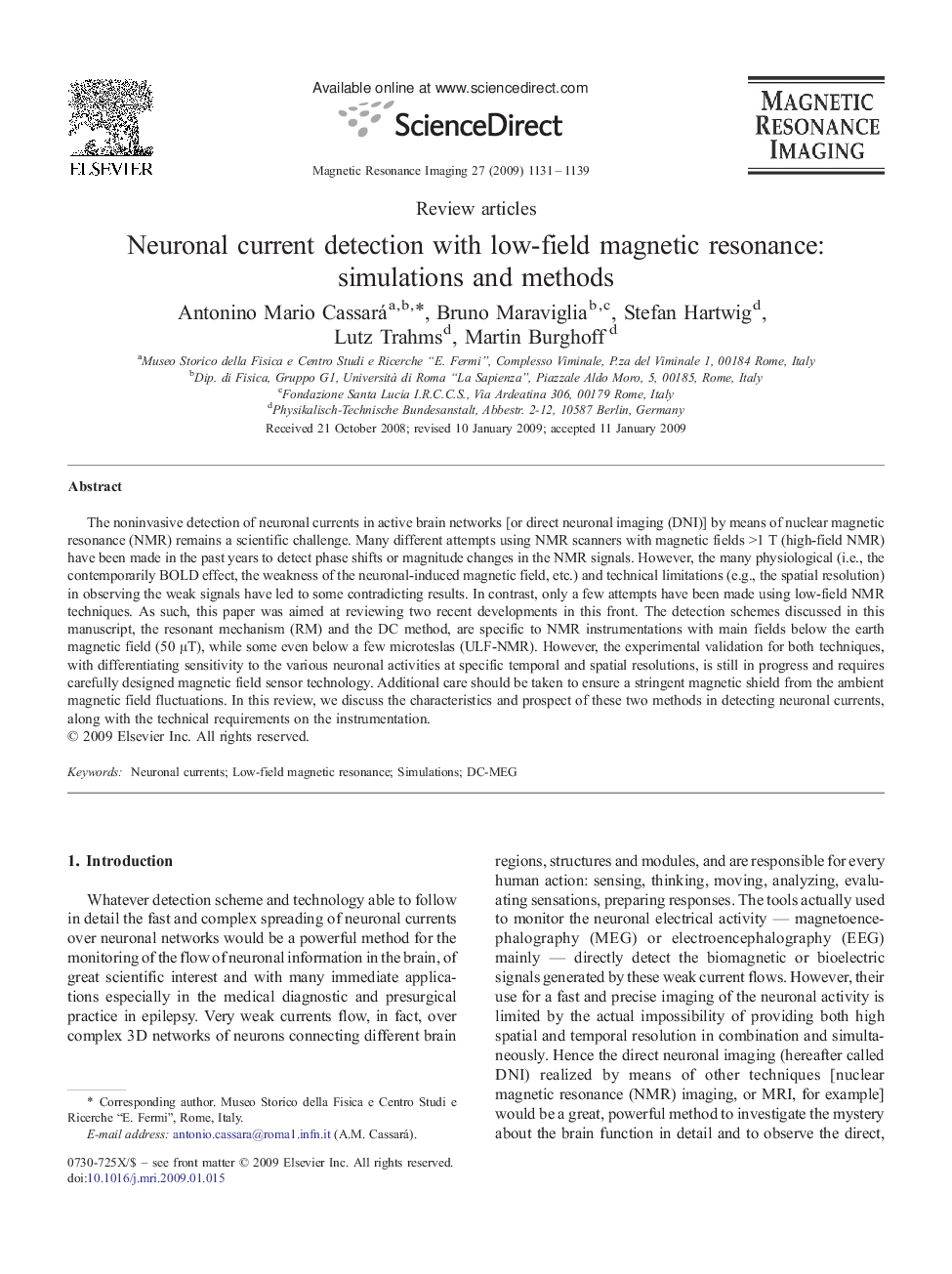| Article ID | Journal | Published Year | Pages | File Type |
|---|---|---|---|---|
| 1807762 | Magnetic Resonance Imaging | 2009 | 9 Pages |
The noninvasive detection of neuronal currents in active brain networks [or direct neuronal imaging (DNI)] by means of nuclear magnetic resonance (NMR) remains a scientific challenge. Many different attempts using NMR scanners with magnetic fields >1 T (high-field NMR) have been made in the past years to detect phase shifts or magnitude changes in the NMR signals. However, the many physiological (i.e., the contemporarily BOLD effect, the weakness of the neuronal-induced magnetic field, etc.) and technical limitations (e.g., the spatial resolution) in observing the weak signals have led to some contradicting results. In contrast, only a few attempts have been made using low-field NMR techniques. As such, this paper was aimed at reviewing two recent developments in this front. The detection schemes discussed in this manuscript, the resonant mechanism (RM) and the DC method, are specific to NMR instrumentations with main fields below the earth magnetic field (50 μT), while some even below a few microteslas (ULF-NMR). However, the experimental validation for both techniques, with differentiating sensitivity to the various neuronal activities at specific temporal and spatial resolutions, is still in progress and requires carefully designed magnetic field sensor technology. Additional care should be taken to ensure a stringent magnetic shield from the ambient magnetic field fluctuations. In this review, we discuss the characteristics and prospect of these two methods in detecting neuronal currents, along with the technical requirements on the instrumentation.
